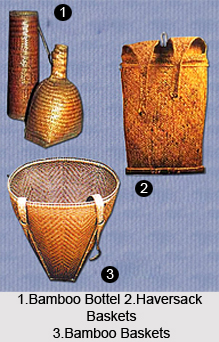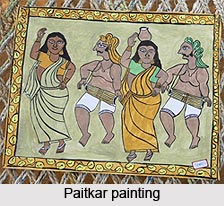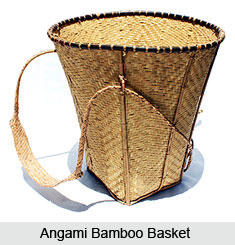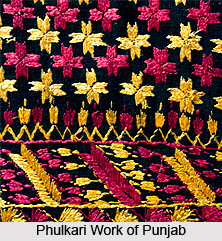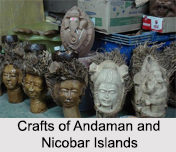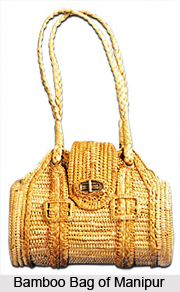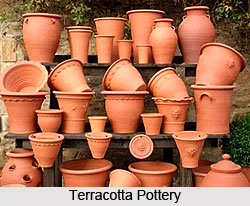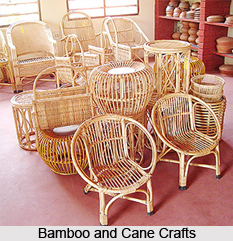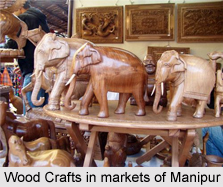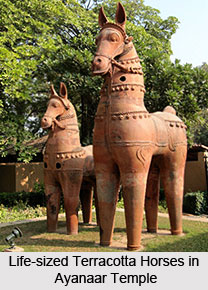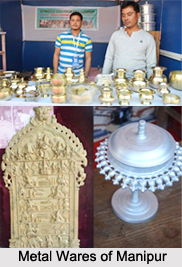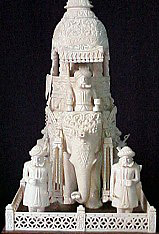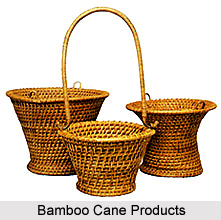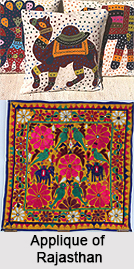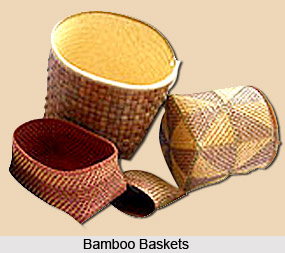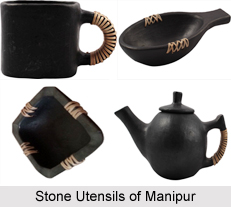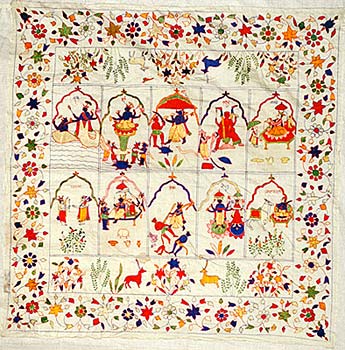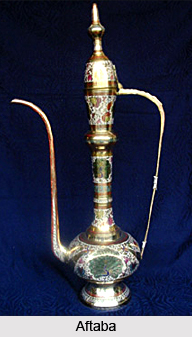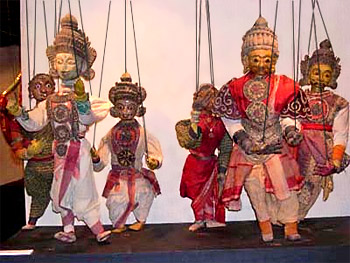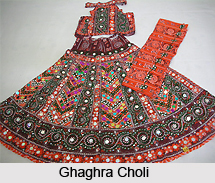 Embroidery of Rajasthan brings new character and dimension to any article that it graces. It is an ancient craft, which has changed over time to reflect the prevailing social, material and sometimes even the political mood of the times. The needles on different cloths do the `embroidery` work. The women of Rajasthan are expert in this field and can make very attractive embroidery works on various clothes like in quilting, skirts (gharries), shawl, bed covers and in many more others.
Embroidery of Rajasthan brings new character and dimension to any article that it graces. It is an ancient craft, which has changed over time to reflect the prevailing social, material and sometimes even the political mood of the times. The needles on different cloths do the `embroidery` work. The women of Rajasthan are expert in this field and can make very attractive embroidery works on various clothes like in quilting, skirts (gharries), shawl, bed covers and in many more others.
The most particularly ornamented fabrics and articles found in Rajasthan are often those for personal adornment. In Rajasthan, some form of embroidery invariably embellishes the three garments worn by women, the kanchli, ghaghras and odhni. Similarly men`s garments like the angarkha, achkan and jama also display certain elements of embroidery. It is also used to beautify the household items, like bedspreads, wall hangings and animal trappings. Where embroidery is done for domestic use, it is by custom a feminine occupation. Rajasthani Men, traditionally, were involved in embroideries like zardosi and danka. These crafts receive the patronage of royal families even today.
As in many traditional societies, Rajasthani women lead somewhat restricted lives. With the exception of a few pastoral and tribal communities, their interactions are usually limited to the confines of their homes and villages. Embroidery, thus, becomes the expression of a woman`s artistic temperament. In fact, activities focused within the household have led to development of a variety of arts and crafts. These are often leisure time activities, after the daily chores are done, around the home, in the fields and any other area that falls within their domain. It is then that the needles come out and ply busily until sundown.
Thus, embroidery of Rajasthan becomes the expression of girls, who usually never learn to read or write. These young artists begin their training at the early age of seven or eight, thus learning to create exquisite patterns on plain fabric. Initially working on simple designs, they gradually master their skills, acquiring the daintiness and refinement of accomplished needlewomen. They work as apprentices to their mothers and grandmothers, sisters and aunts, who pass on to them designs, patterns and a heritage that has evolved over the centuries. A wide variety of techniques are used in the embroidery of costumes and textiles. Some of the popular styles are, among others, metal embroidery, gota work, and suf bharat.
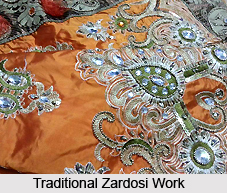 Jaisalmer is the center for trading of embroidery and mirror work items. The saddle of camels and horses of Rajasthan are decorated with embroidery. Even the shoes of Rajasthan are embroidered with varieties of coloured threads. In the temples of Rajasthan, a cloth hanging named the `pichwai of Nathdwara` can be found, which is also very nicely embroidered. In some cases, the embroidery is done with golden threads to highlight the design. Generally, the pichwai has red cotton background and the stitches are in cream, green, yellow and black, while the white colour is used for the outlines. The motifs of tree, birds and animals are generally embroidered on their skirts (ghagras). Again the women of Bikaner use chunky red woolen shawl with a running stitch in a bandhi pattern in their embroidery.
Jaisalmer is the center for trading of embroidery and mirror work items. The saddle of camels and horses of Rajasthan are decorated with embroidery. Even the shoes of Rajasthan are embroidered with varieties of coloured threads. In the temples of Rajasthan, a cloth hanging named the `pichwai of Nathdwara` can be found, which is also very nicely embroidered. In some cases, the embroidery is done with golden threads to highlight the design. Generally, the pichwai has red cotton background and the stitches are in cream, green, yellow and black, while the white colour is used for the outlines. The motifs of tree, birds and animals are generally embroidered on their skirts (ghagras). Again the women of Bikaner use chunky red woolen shawl with a running stitch in a bandhi pattern in their embroidery.
There are several communities of Rajasthan, who are involved in making leather products and embroideries on them. In the `knucklepad` leather products, miniature landscapes and festive scenes are embroidered like in Rajput paintings. In these embroidery works of Rajasthan, the minute details of the embroidery are worked out and the group compositions are done carefully. The scenes embroidered here are mainly of human figures as well as floral and bird designs. In Bikaner and Jaisalmer the embroidered leather saddles are very popular. The Jaisalmer embroidery also applies mirror works sometimes to provide a visual impact.
Rajasthan is also popular for `karchobi`, a form of zari metallic thread embroidery done with needle. This kind of embroidery is done by flat stitches on cotton stuffing and can be found on bridal and formal costumes. This is also seen on velvet coverings, curtains, tent hangings and the coverings of animal carts and temple chariots. The different communities of Rajasthan have their own style of embroidery. The Jat women of Sikar and Jhunjhuna make animal figures and simple tree forms in their embroidery. In their work, all these remain juxtaposed together to form a specific pattern in the borders of their cotton skirts. The Meos of Alwar has again their unique style of embroidering a rich pattern with chain stitch in contrasting colours and the body is roofed with the `phulkar bagh` stitch.
These embroidery works of Rajasthan are part of its tradition. But now, it is used mainly as an occupation. These beautiful works need to be encouraged as it is highly praised by the tourists all over the world.
